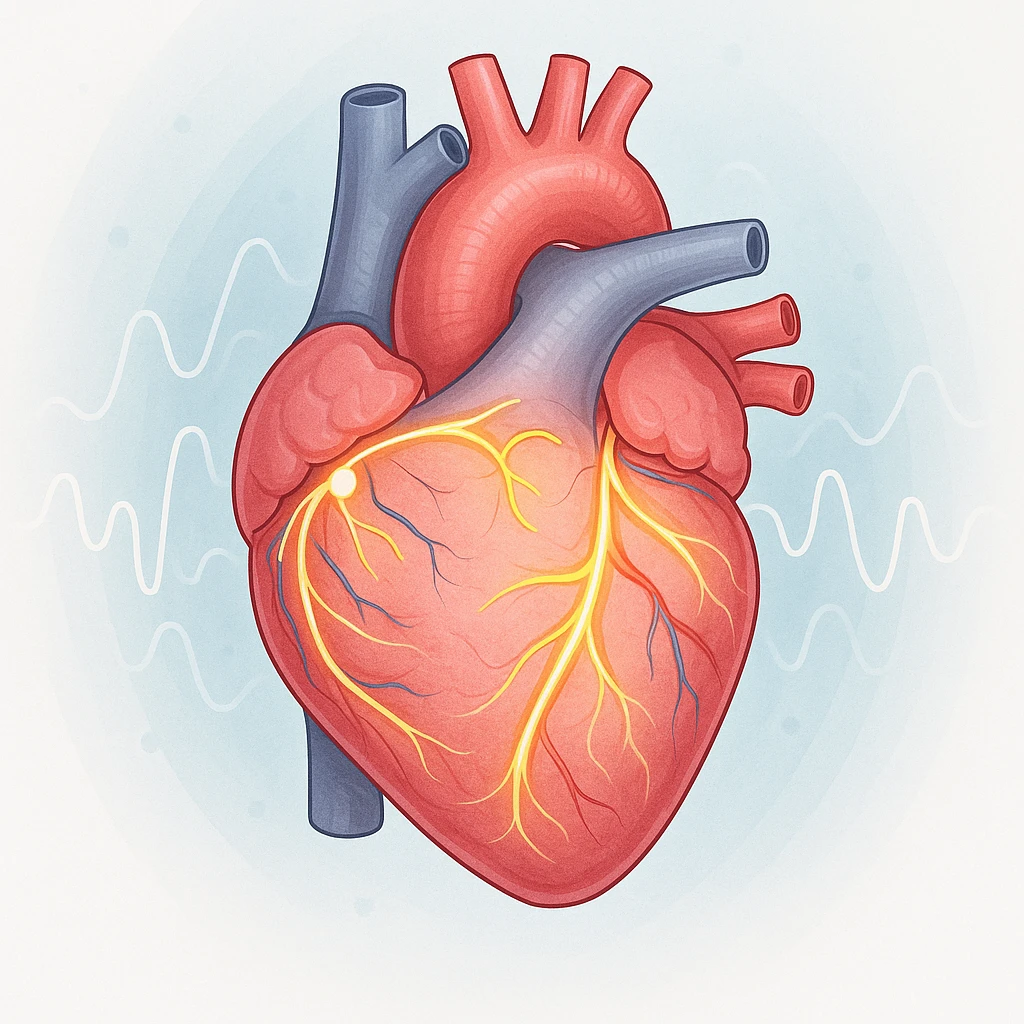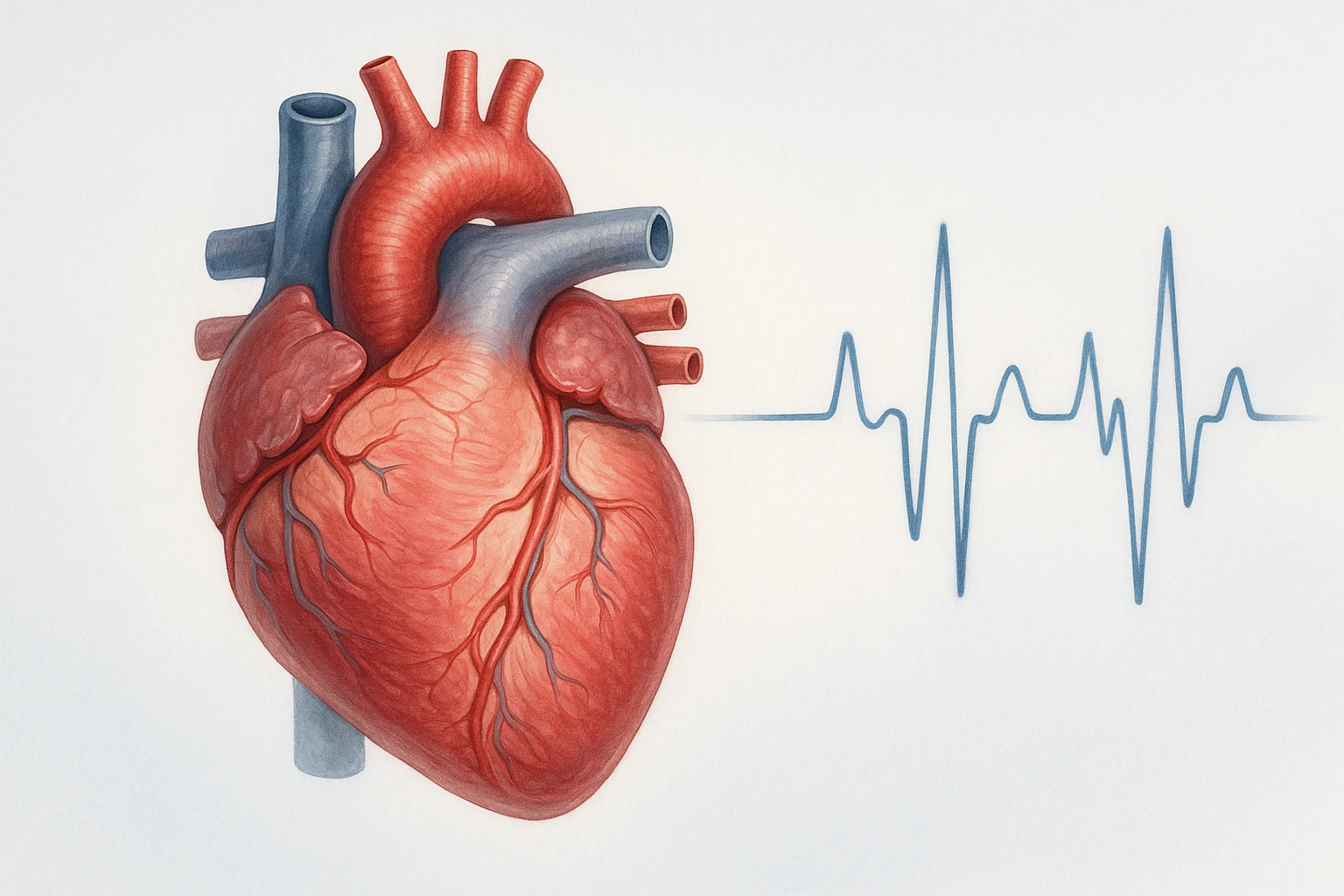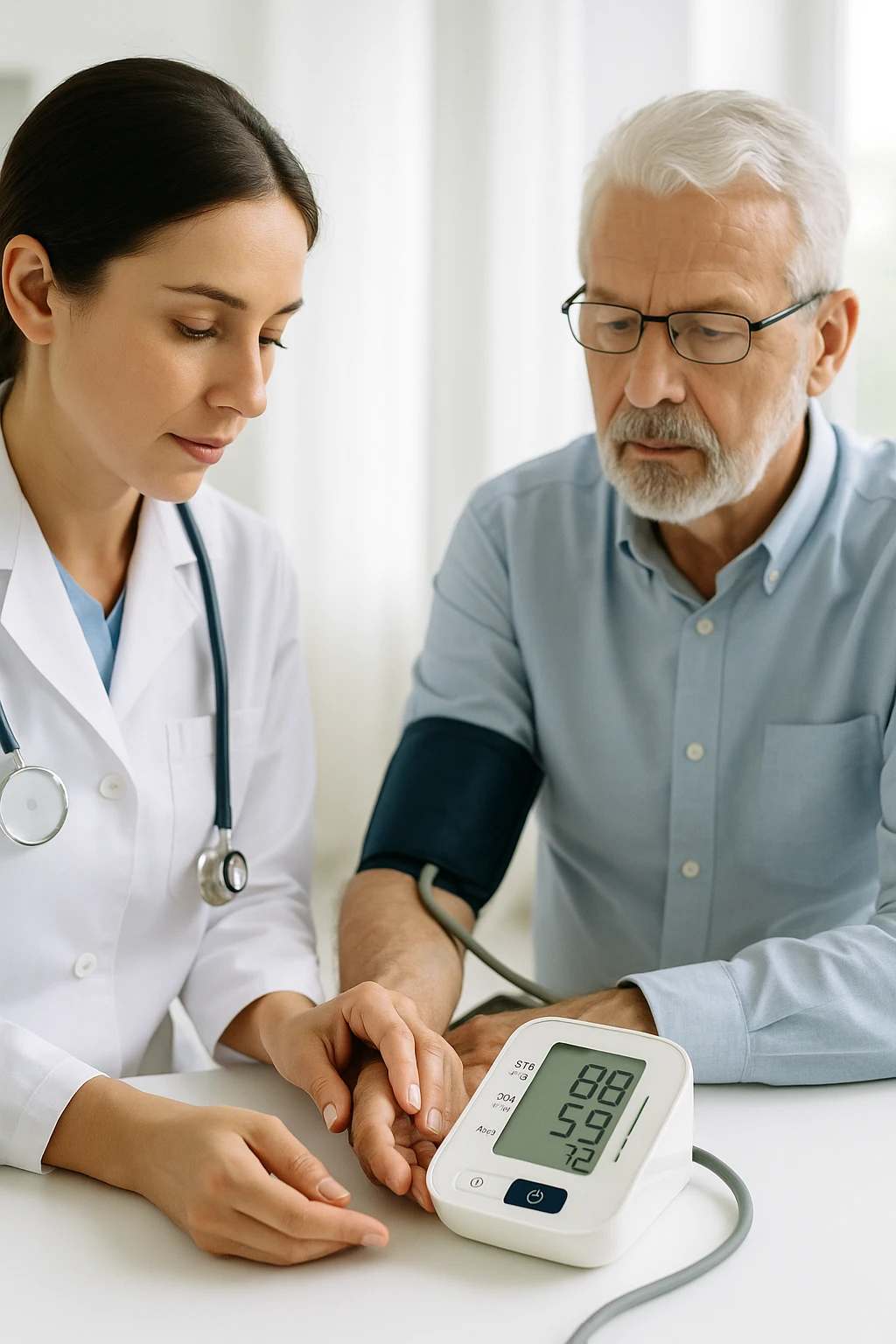Irregular Heartbeat Diagnosis, Care, and Prevention Tips
Irregular Heartbeat
An irregular heartbeat, also known as an arrhythmia, occurs when the heart does not follow its usual steady rhythm. In a healthy heart, electrical impulses travel through specific pathways that coordinate each heartbeat effectively. When this electrical signaling is disrupted, the heart may beat too quickly, too slowly, or with an irregular pattern. While many arrhythmias are harmless, others can interfere with the heart’s ability to pump blood efficiently, making it important to understand when they require medical attention.
How the Heart’s Electrical System Works
The heart has its own electrical system that acts as a natural pacemaker. Each heartbeat starts with an electrical signal from the sinoatrial (SA) node in the right atrium. This signal moves through the atria, prompting them to contract and move blood into the ventricles. The impulse then passes through the atrioventricular (AV) node and into the ventricles, causing them to contract and push blood to the lungs and body. When this system is disrupted-because of injury, illness, or tissue changes-the rhythm can become irregular or disorganized.
These irregularities can range from brief skipped beats to persistent rhythm disturbances that need treatment. Understanding this process helps explain why even small changes in heart conduction can cause noticeable symptoms.
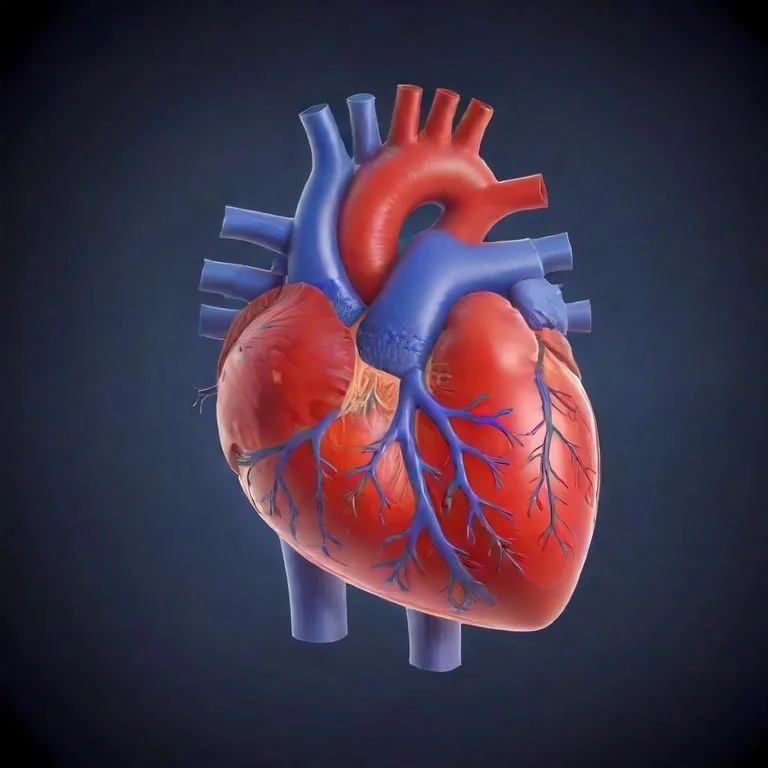
Types of Irregular Heartbeats
Arrhythmias are categorized by how they affect heart rate and where they begin:
- Tachycardia: A heartbeat that is faster than normal.
- Bradycardia: A heartbeat that is slower than normal.
- Irregular rhythm: Beat timing varies unpredictably.
They are further classified by origin:
- Supraventricular arrhythmias: Start in the upper chambers (atria).
- Ventricular arrhythmias: Start in the lower chambers (ventricles).
This classification guides diagnosis and treatment decisions. Not all irregular heartbeats are dangerous, and many are discovered during routine exams. Understanding that the heart’s electrical system can produce different rhythm patterns helps explain why evaluation may be necessary even without symptoms.
Causes and Warning Signs of Irregular Heartbeat
Medical and Lifestyle Causes
Many irregular heartbeats develop because of changes in the heart’s structure or function. Conditions such as coronary artery disease, hypertension, heart failure, and valvular disease can disrupt normal electrical pathways, creating areas that block or misdirect electrical signals. Over time, these changes may increase the risk of both fast and slow rhythm disturbances.
Arrhythmias can also result from factors outside the heart, including:
- Electrolyte imbalances: Abnormal potassium, calcium, or magnesium levels can alter electrical activity.
- Thyroid disorders: Overactive or underactive thyroid function may cause irregular heartbeats.
- Medications: Some drugs for asthma, allergies, or mental health can affect rhythm.
- Stimulants: Caffeine, nicotine, or illicit drugs can trigger arrhythmias.
- Lifestyle factors: Smoking, heavy alcohol use, and chronic stress can increase susceptibility.
Recognizing Symptoms
Symptoms of an irregular heartbeat range from mild to severe. Many describe palpitations-a fluttering, pounding, or skipping sensation in the chest. Others may notice the heart racing or slowing unexpectedly. Dizziness, lightheadedness, shortness of breath, or fatigue can also occur when blood flow becomes inefficient.
Some arrhythmias occur silently and are detected only during a physical exam or routine electrocardiogram. Understanding these sensations helps individuals recognize when something feels off and share observations with a healthcare provider.
When to Seek Medical Attention
While many irregular heartbeats are harmless, certain symptoms require prompt medical care:
- Fainting or loss of consciousness
- Chest pain or discomfort
- Severe shortness of breath
These may accompany arrhythmias that cause the heart to beat too quickly, too slowly, or inefficiently. Immediate evaluation is essential to restore rhythm and prevent complications. Even mild or recurring irregularities should be discussed with a healthcare professional to determine if they indicate a more serious condition.
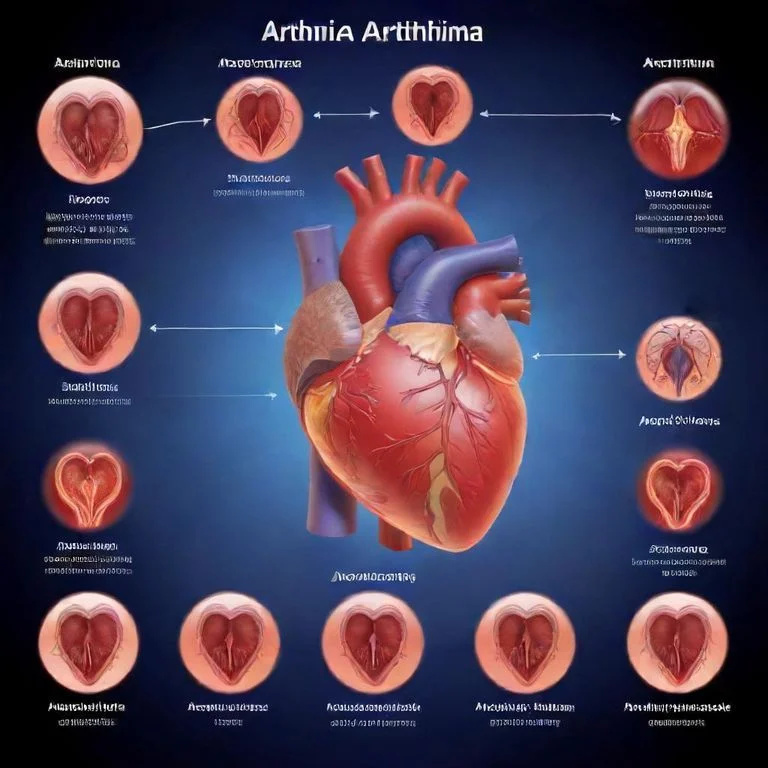
Diagnosing Irregular Heartbeats
Initial Evaluation
Diagnosis of an irregular heartbeat starts with a thorough medical history and physical exam. Providers ask about symptoms such as palpitations, dizziness, or fainting spells, along with triggers like stress, caffeine, or medications. Family history is also reviewed, since certain arrhythmias can be inherited. Listening to the heart and checking for signs of underlying disease guide next steps.
The initial test is the 12-lead electrocardiogram (ECG), which records the heart’s electrical activity from multiple angles. This quick, painless test can identify whether beats are too fast, too slow, or irregular, providing insight into rhythm type and potential electrical disturbances.
- History and examination: Identify symptoms, triggers, and family heart history.
- 12-lead ECG: Measures electrical signals to detect rate or rhythm irregularities.
Advanced and Long-Term Monitoring
If arrhythmias occur intermittently, continuous or event-based monitoring may be needed. A portable Holter monitor records heart rhythms over 24 to 48 hours, while event recorders or wearable patches can track data for weeks. These tools help correlate symptoms-such as dizziness or palpitations-with timing of rhythm changes.
Additional noninvasive tests can identify structural or metabolic contributors. Echocardiography shows how the heart’s chambers and valves function, while blood tests check for thyroid or electrolyte imbalances and medication effects that may influence rhythm stability.
- Holter or event monitors: Track rhythm changes over days or weeks.
- Echocardiogram: Evaluates heart structure and function.
- Laboratory tests: Detect thyroid or electrolyte changes that affect heart rhythm.
Specialized Testing
When the cause or type of arrhythmia remains unclear, specialized testing may be recommended. An electrophysiology study maps the heart’s electrical activity directly, allowing doctors to pinpoint rhythm disturbances and plan treatments such as ablation. Imaging techniques like cardiac MRI or CT can assess scarring or structural abnormalities when indicated.
- Electrophysiology study: Maps electrical activity to locate rhythm issues.
- Cardiac MRI or CT scan: Evaluates heart structure for complex cases.

This stepwise process enables clinicians to accurately classify arrhythmias and tailor management to each individual’s condition.
Treatment and Living Well with Irregular Heartbeat
Treatment Pathways
Managing an irregular heartbeat begins with understanding that not all arrhythmias require active treatment. In mild cases where the heart is structurally healthy, observation and monitoring may be sufficient. When treatment is needed, medications are often the first approach and may include:
- Rate-controlling drugs: Slow the heart rate to improve efficiency.
- Rhythm-controlling agents: Restore or maintain a regular rhythm.
- Blood thinners: Used for certain arrhythmias with a higher clot risk.
If medication alone is not effective, interventional procedures may be considered:
- Catheter ablation: Minimally invasive technique that targets abnormal electrical areas.
- Pacemakers and defibrillators: Implanted devices that regulate or restore rhythm automatically.
Adjusting to Daily Life
Living with an irregular heartbeat often involves balancing treatment with everyday life. Many people remain active once their condition is managed. However, anxiety about palpitations or skipped beats is common. Discussing these feelings with healthcare providers can help reduce stress and increase confidence.
To support heart health and emotional well-being, individuals are encouraged to:
- Engage in regular physical activity within safe limits.
- Manage stress and prioritize rest.
- Track symptoms and follow medications carefully.
- Avoid excess caffeine and alcohol.
- Seek emotional support from family or support groups.
Follow-up Care
Ongoing follow-up is essential for managing heart rhythm disorders. Regular appointments help review medications and assess effectiveness. For those with implanted devices, periodic checks confirm proper function and battery health. Monitoring such as ECGs may be repeated to detect changes early.
Consistent communication with healthcare professionals supports stability and peace of mind, enabling individuals to live well with an irregular heartbeat.
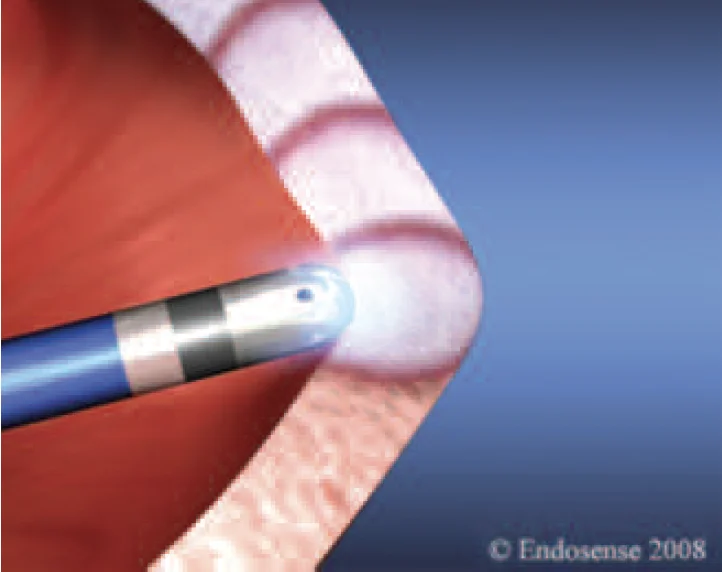
Prevention, Complications, and Future Directions for Irregular Heartbeat
Preventing Future Episodes
Many cases of irregular heartbeat can be prevented or reduced in frequency through attention to overall heart health. Managing blood pressure, cholesterol, blood sugar, and body weight helps maintain a strong cardiovascular system and reduces strain on the heart’s electrical pathways. These actions are especially important for people with a family history of heart disease or other risk factors.
- Maintain healthy blood pressure, cholesterol, and blood sugar levels.
- Keep body weight within a healthy range.
- Avoid tobacco use and limit alcohol intake.
- Be cautious with stimulants such as caffeine and certain medications.
- Encourage balanced meals, regular exercise, and effective stress management for the whole family.
Long-Term Risks
While many arrhythmias are mild or manageable, others can have serious consequences if left untreated. Certain types, particularly those associated with structural heart disease or rapid heart rhythms, may increase the risk of stroke, heart failure, or sudden cardiac death. These complications occur when the heart cannot pump efficiently or when irregular rhythms cause blood clots to form.
Consistent medical follow-up helps identify these risks early. By controlling underlying conditions, following prescribed treatments, and promptly addressing new symptoms, most individuals can significantly lower the risk of long-term complications and maintain good quality of life.
Innovations in Care
Treatment for irregular heartbeats continues to advance, offering safer and more effective ways to restore and maintain rhythm control. Catheter ablation has become a proven option for selected symptomatic arrhythmias, often providing better results than long-term medication in specific cases. This procedure allows doctors to precisely target and correct the electrical source of the rhythm disturbance.
Technological innovation is also improving early detection and ongoing care. Wearable devices and implantable sensors can continuously monitor rhythm patterns, giving healthcare providers detailed insights for diagnosis and management. These developments, combined with preventive care and patient education, are shaping a future where arrhythmias can be identified earlier, treated more effectively, and managed with greater confidence.
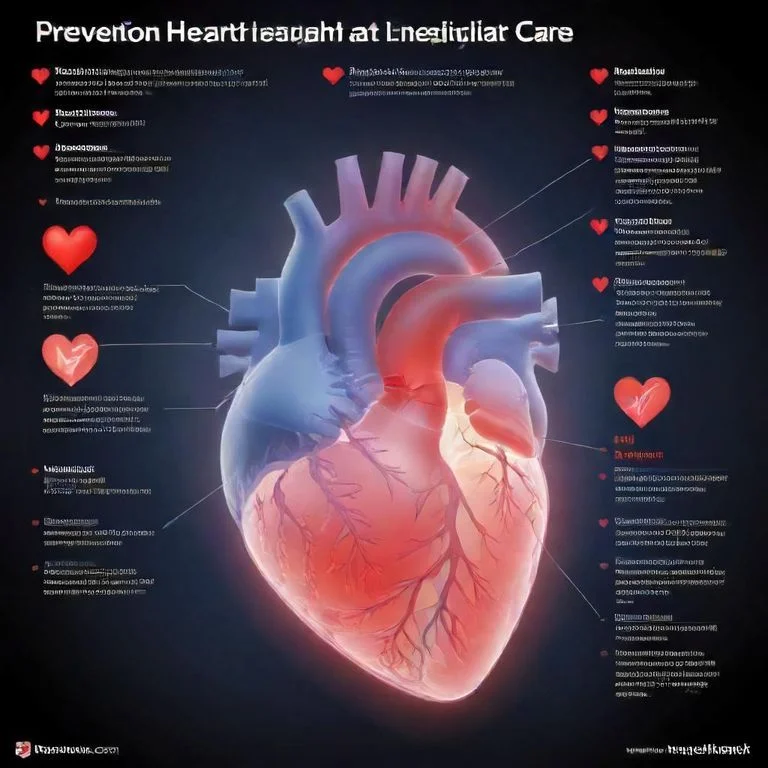
Frequently Asked Questions About Irregular Heartbeat
- Is an irregular heartbeat always dangerous?
- Not necessarily. Some irregular heartbeats are harmless and temporary, while others may signal underlying heart problems that require medical evaluation.
- Can stress or anxiety trigger heart rhythm changes?
- Yes. Emotional stress and anxiety can increase adrenaline levels, which sometimes affect the heart’s electrical signals and cause temporary rhythm irregularities.
- How is an irregular heartbeat diagnosed?
- Doctors use tests such as an electrocardiogram (ECG), Holter monitor, or other rhythm trackers to detect irregularities and determine their cause and severity.
- What symptoms should prompt urgent medical attention?
- Seek immediate care for chest pain, fainting, severe shortness of breath, or a racing heart that does not slow down on its own.
- Do lifestyle habits influence irregular heartbeats?
- Yes. Smoking, high alcohol intake, poor diet, and lack of physical activity can all increase the likelihood of developing heart rhythm disturbances.
- Can caffeine cause an irregular heartbeat?
- Excess caffeine or energy drinks may trigger palpitations in some people, especially those sensitive to stimulants or with existing heart conditions.
- What treatments are available for arrhythmias?
- Treatment depends on the type and cause. Options include medication, catheter ablation, implanted pacemakers or defibrillators, and ongoing monitoring.
- Is it possible to live a normal life with an irregular heartbeat?
- Most people can lead active, fulfilling lives once their condition is identified and managed under regular medical supervision.
- Can irregular heartbeats run in families?
- Some arrhythmias have a genetic component. Family history helps doctors assess inherited risks and guide screening recommendations.
- How can future episodes be prevented?
- Maintaining healthy blood pressure, managing stress, and avoiding stimulants or smoking can help lower the chance of recurrent irregular heartbeats.
- Are wearable heart monitors helpful?
- Yes. Modern wearable devices can track heart rhythm patterns, helping detect irregularities early and support ongoing care.
